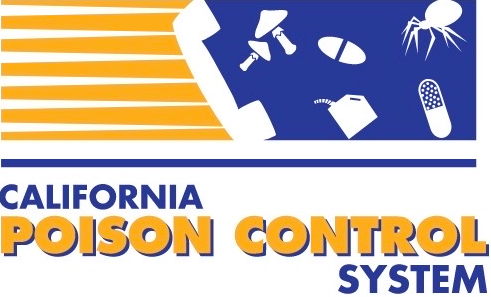By Alicia Minns, MD
Introduction
Salvia divinorum is a rare member of the mint family (Labiatae), endemic to a small region of Oaxaca, Mexico. Shamans of the Mazatec Indians of Oaxaca have used the plant for centuries for religious purposes as well as in medicinal practices to treat diarrhea, headache, rheumatism, anemia, and a semi-magical disease known as panzón de Borrego, or a swollen belly, believed to be caused by an evil sorcerer. Similar to cannabis, S. divinorum can be also cultivated indoors or in any humid and semitropical environment. Recently, S. divinorum (usually referred to as salvia) has received increasing attention for its recreational use due to its unique psychedelic effects. It has gained popularity as a “legal high” due to its accessibility, legality in many areas, perception of relative safety, and lack of detectability upon routine drug screening. S. divinorum is frequently promoted as a safe and legal alternative to scheduled hallucinogenic drugs, such as cannabis, LSD, and mescaline.
Salvinorin A, the active component of salvia, is unique for several reasons, which include: 1) it is the first plant-derived molecule with selectivity for kappa-opioid receptors, 2) it is structurally unrelated to any known opioid receptor agonist, and 3) it is pharmacologically and mechanistically distinct from other known hallucinogens.
Case presentation
A 23 year-old male presented to the Emergency Department with anxiety. He admitted to smoking “Diviner’s Sage” shortly before arrival, which he purchased legally from the Internet. He reported having intense visual and auditory hallucinations including seeing furniture come alive and talk to him. He felt that he had lost his identity and reported various sensations of motion, like he was being pulled. On exam, he appeared anxious however had normal vital signs, and his physical exam including a neurologic exam was normal. Shortly after arrival, he felt better and was discharged from the Emergency Department. His urine drug screen was negative.
Questions
- Is the mechanism of action of salvia similar to other hallucinogens, such as LSD?
- Do people under the influence of salvia commonly present to the Emergency Department for treatment?
- Is there an antidote to salvia poisoning?
Epidemiology
Salvia divinorum is one of the most widely marketed recreational botanicals available via the Internet. Salvia divinorum is being used recreationally by both adults and adolescents worldwide. In a recent study of adolescent drug users, 25% of the surveyed adolescents stated that they had used the Internet to obtain information about Salvia divinorum. Several features make Salvia divinorum attractive to young drug users. First, plant material or extracts of salvinorin A may be purchased from “head” shops, record stores, online vendors, and even university campus stores. Whole plants, seeds, and tips for successful cultivation are available via the Internet.
Pathophysiology
The principal active component of S. divinorum is salvinorin A. Although a number of other compounds have been isolated from the plant, including salvinorins B–I, their biological activity remains to be elucidated. The concentration of salvinorin A in leaves collected from separate plants, even genetically identical ones, can vary considerably. In vitro and in vivo studies have demonstrated that salvinorin A is a selective and potent agonist of k-opioid receptors (KOR), and has no structural resemblance to any known hallucinogens, such as LSD. Of particular importance is the fact that salvinorin A has no affinity for other known receptors for psychoactive compounds, such other opioid receptors, cannabinoid receptors, cholinergic receptors, glutamate receptors, and serotonin (5-HT) receptors, including 5-HT2A, which represent the main molecular target for classical hallucinogens, such as LSD, psilocybin, and mescaline.
Taken orally, salvinorin A is minimally absorbed through the mucosa, and most of the dose is degraded in the gastrointestinal tract. On the other hand, when inhaled, salvinorin A exerts psychoactive effects within seconds that last only minutes. Inhalation (of either vaporized salvinorin A extract or smoked dried leaves) produces psychoactive effects within seconds, which last up to 20 to 30 minutes. Threshold doses of Salvia divinorum required to produce hallucinations depend on the route of administration. Two hundred micrograms of salvinorin A has been described as the threshold dose for hallucinations after inhalation, while doses of 10 mg failed to produce hallucinations after ingestion. The intravenous administration of salvinorin A is not described in humans, although it has been performed in an animal model.
The KOR mediates diverse behavioral functions including mediation of reward and aversion, mood, anxiety, memory, and higher cognitive functions as well as neuroendocrine effects and pain/analgesia. KOR are localized in most major dopaminergic areas in the CNS. KOR activation by exogenous compounds such as salivorum A tends to result in a decrease in dopaminergic activation, an effect opposite to that of diverse drugs of abuse including cocaine and other psychostimulatns.
Clinical manifestations
Inhalation of the vaporized smoke of salvinorin A is considered as the most efficient method for achieving its psychoactive effects. Salvinorin A induces intense, but short-lived, psychedelic-like changes in visual perception and mood, and somatic sensations, which appear in less than 1 min and last for 15 min or less. Importantly, the rapid onset and high intensity of the effects of salvia can be disorienting and potentially dangerous to a new user, who may have expected a marijuana-like experience. Characteristic vivid visual hallucinations include mainly perceptions of changes in bodily form, merging with objects in the environment, being relocated to a different setting, strong dissociate states in which the passage of time is altered, and colorful visions of objects and designs. Some users describe confusion of senses, called synesthesia, such as seeing sounds and hearing colors. Others report an “out of body experience.”
Most of the reported effects of S. divinorum are pleasant. Effects of salvia could be also negative including loss of control over the experience, a feeling of heaviness in the head, fatigue, dizziness, confusion, anxiety, social withdrawal, amnesia, dysphoria, temporary language impairment, and increased perspiration.
Diagnosis
At present, neither salvinorin A nor its metabolites can be detected by standard and extended drug tests. However, because S. divinorum is controlled in several countries, including Australia, Belgium, Canada, Italy, Japan, Poland, Russia, Spain, and Sweden, and in several USA states, various highly advanced methods for forensic analysis of suspected products and biological fluids have been developed in recent years. Salvia divinorum cannot be distinguished from other Salvia species on the basis of morphological features. However, as salvinorin A is present only in S. divinorum. Common methods of salvinorin A detection in the plant material are based on gas chromatography–mass spectrometry and liquid chromatography–mass spectrometry. These tests are typically performed for forensic purposes only and are not useful in acute management of a poisoned patient.
Treatment
In comparison to other hallucinogens, the physiological and neuropsychiatric effects produced by Salvia divinorum are relatively mild, but agitated delirium and confusion are reported. Symptoms severe enough to require treatment in the emergency department are thought to be uncommon, likely due to the short duration of effects. The greatest risk may be trauma in the context of complex activity, like driving. To date, no cases of Salvia divinorum deaths from overdose have been reported. Theoretically, naloxone (a non-specific opioid receptor antagonist) may reverse the physiological and psychiatric effects of salvinorin A at the kappa opioid receptor. A selective kappa opioid receptor antagonist, norbinaltorphine, demonstrated complete reversal of the analgesic effects of salvinorin A in mice. Otherwise, treatment is supportive and benzodiazepines may be used for anxiety if needed.
Discussion of case questions
- Is the mechanism of action of salvia similar to other hallucinogens, such as LSD?
Salvinorin A, the active component of salvia, is a selective and potent agonist of k-opioid receptors (KOR), and has no structural resemblance to any known hallucinogens, such as LSD. Salvinorin A has no affinity for other known receptors for psychoactive compounds, most importantly serotonin (5-HT) receptors, including 5-HT2A, which represent the main molecular target for classical hallucinogens, such as LSD, psilocybin, and mescaline. - Do people under the influence of salvia commonly present to the Emergency Department for treatment?
Symptoms severe enough to require treatment in the emergency department are thought to be uncommon, likely due to the short duration of effects. Unless a patient presents with trauma, the psychedelic effects of salvia have worn off by the time the patient presents to a health care facility. - Is there an antidote to salvia poisoning?
Theoretically, naloxone (a non-specific opioid receptor antagonist) may reverse the physiological and psychiatric effects of salvinorin A at the kappa opioid receptor, however this is typically not indicated due the short duration of effects of salvia.
Case conclusion
The patient was admitted to the intensive care unit and given vigorously hydrated with normal saline to treat hypotension with systolic blood pressures in the 80-90’s mmHg overnight. Acidosis and lactic acid levels cleared over the next 24 hours and creatinine levels remained normal. She was discharged on hospital day 2 after being cleared by psychiatry.



